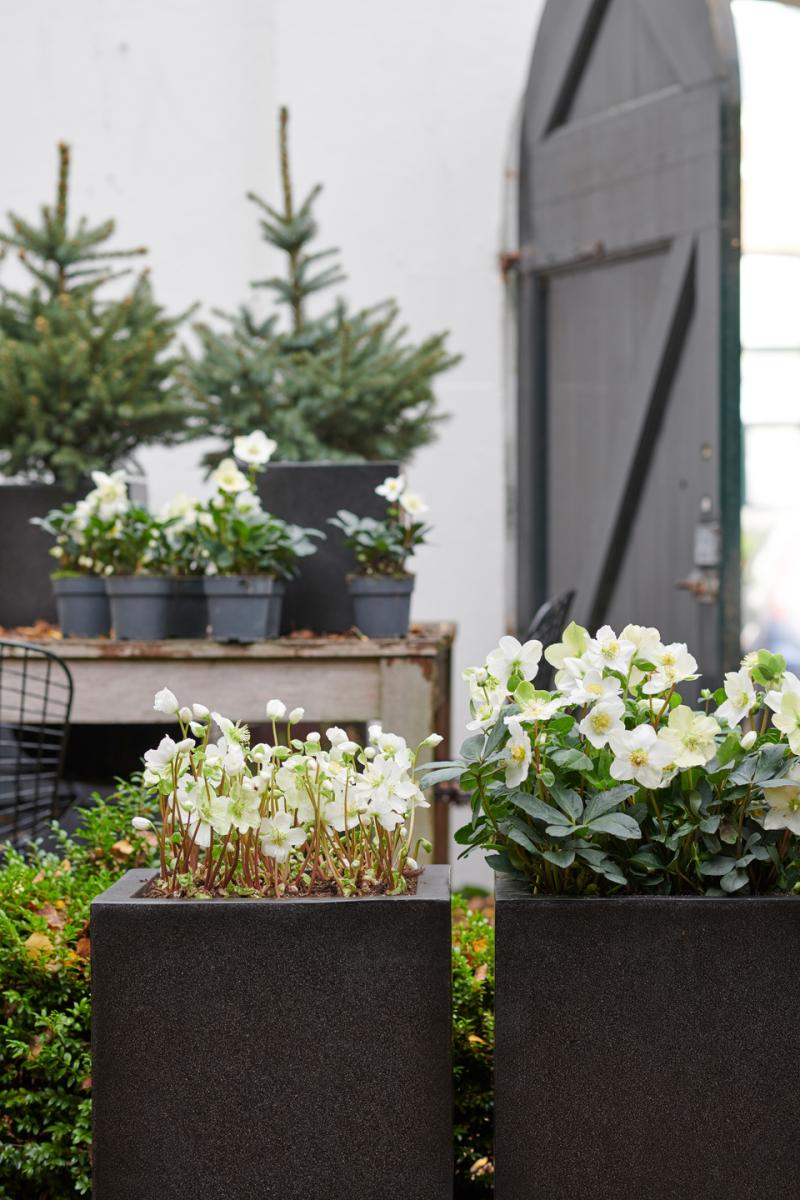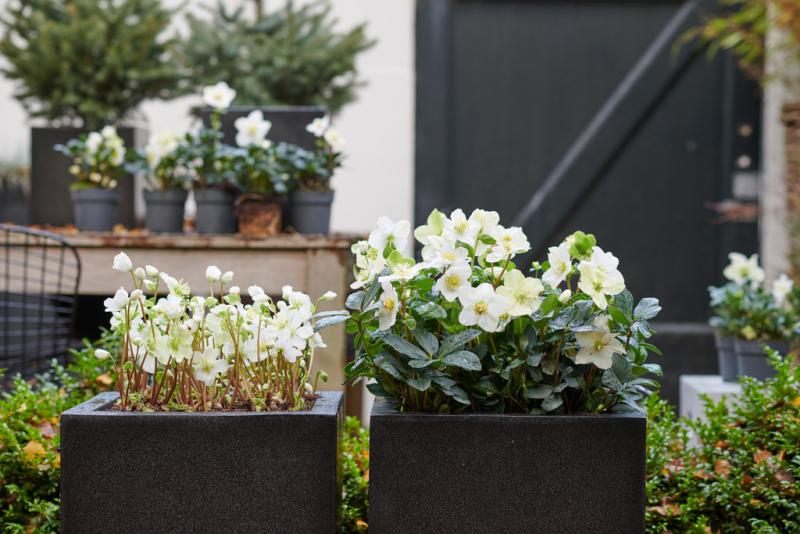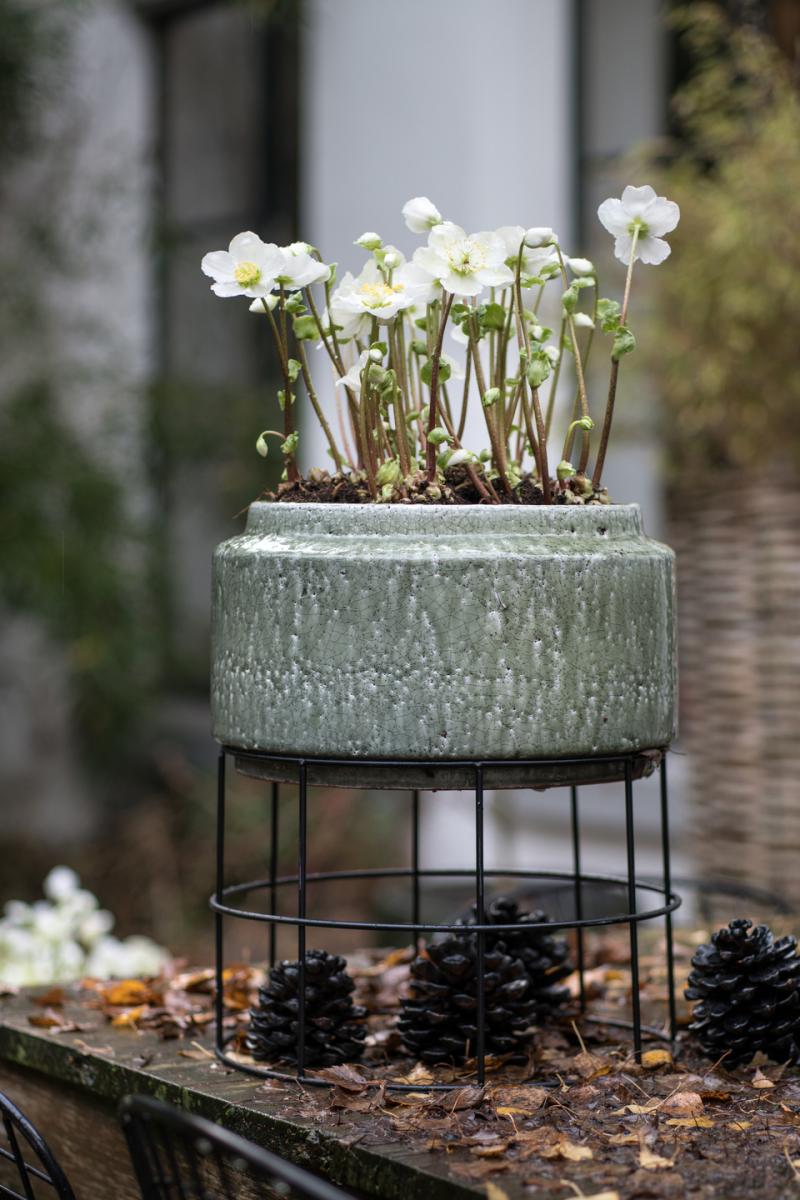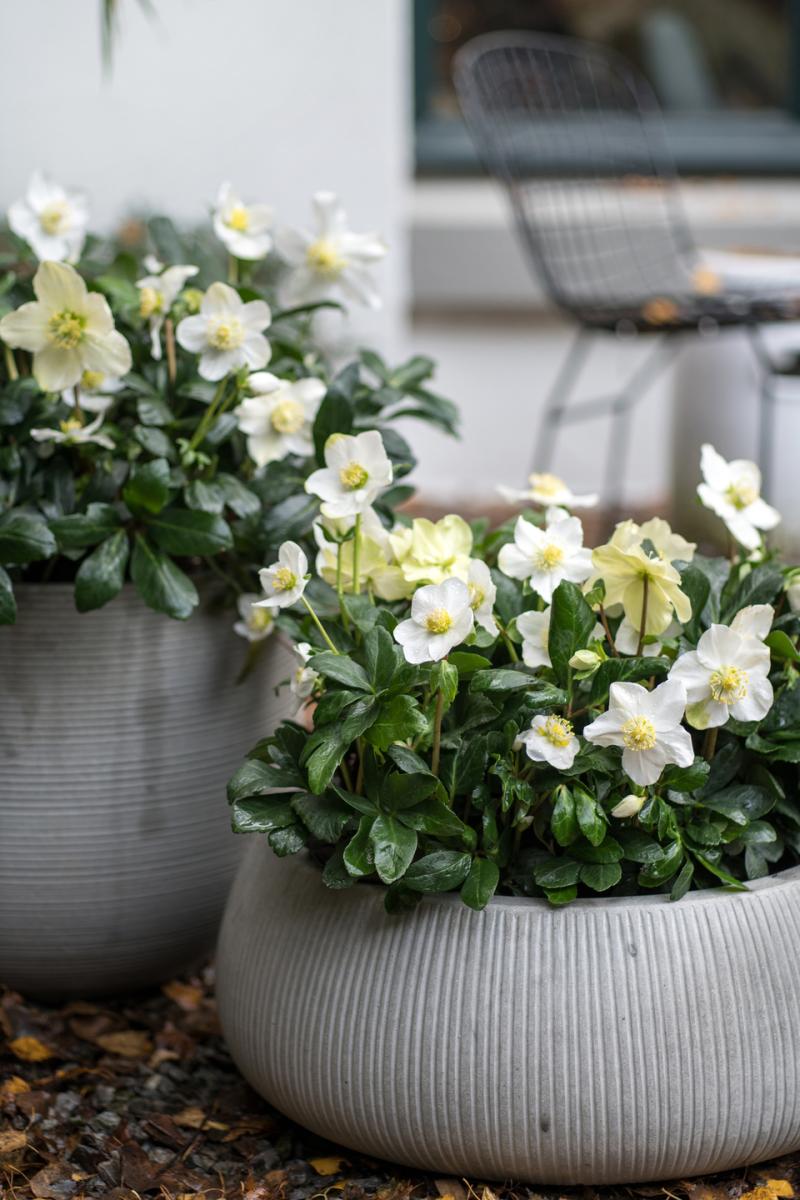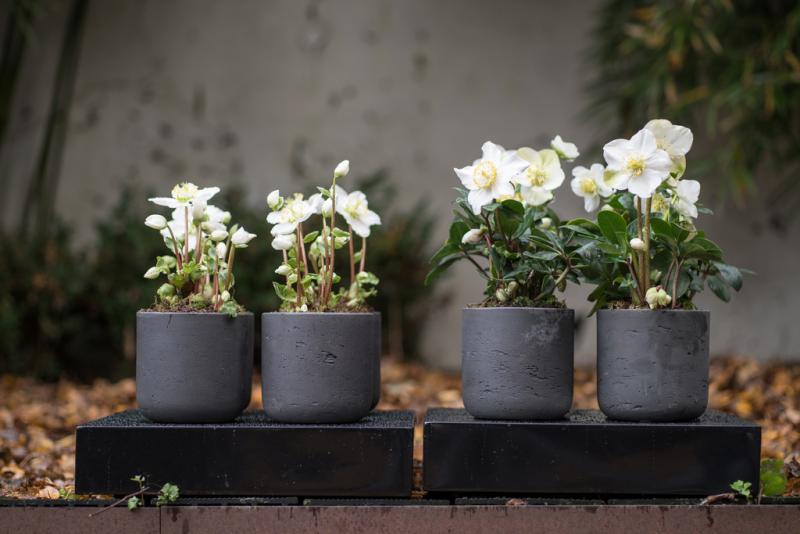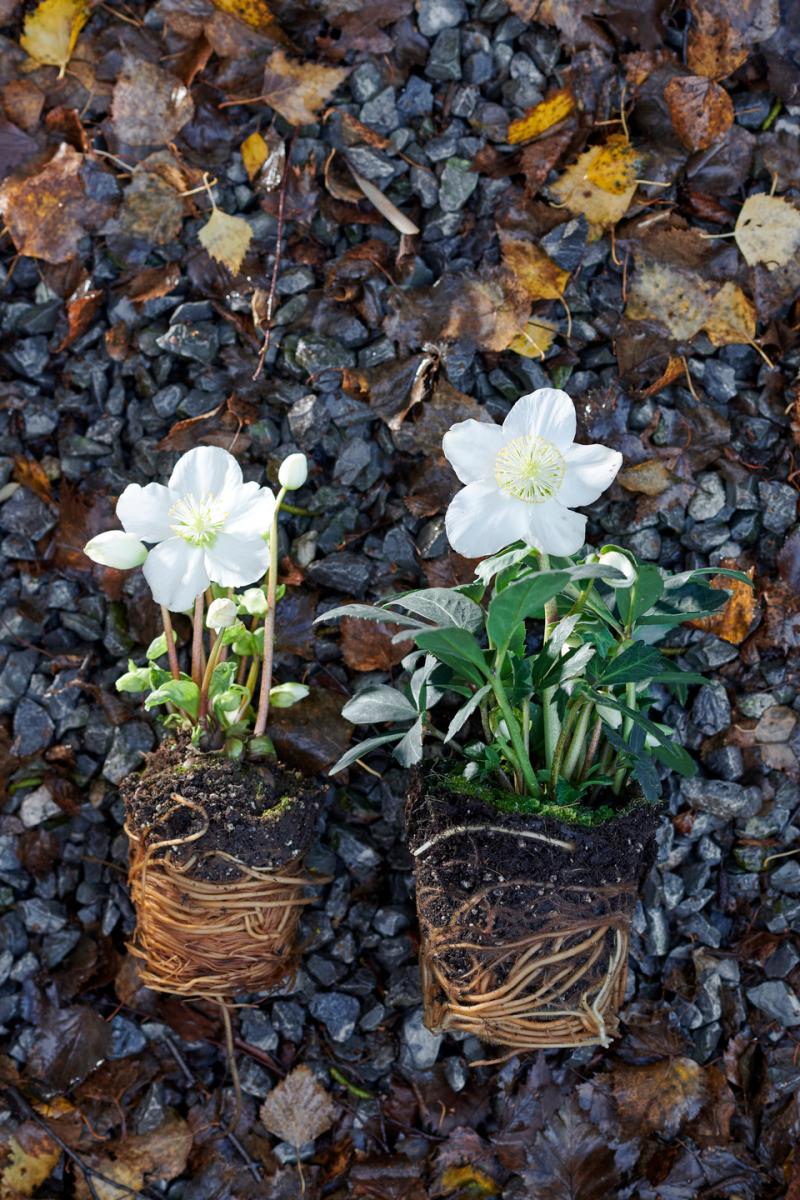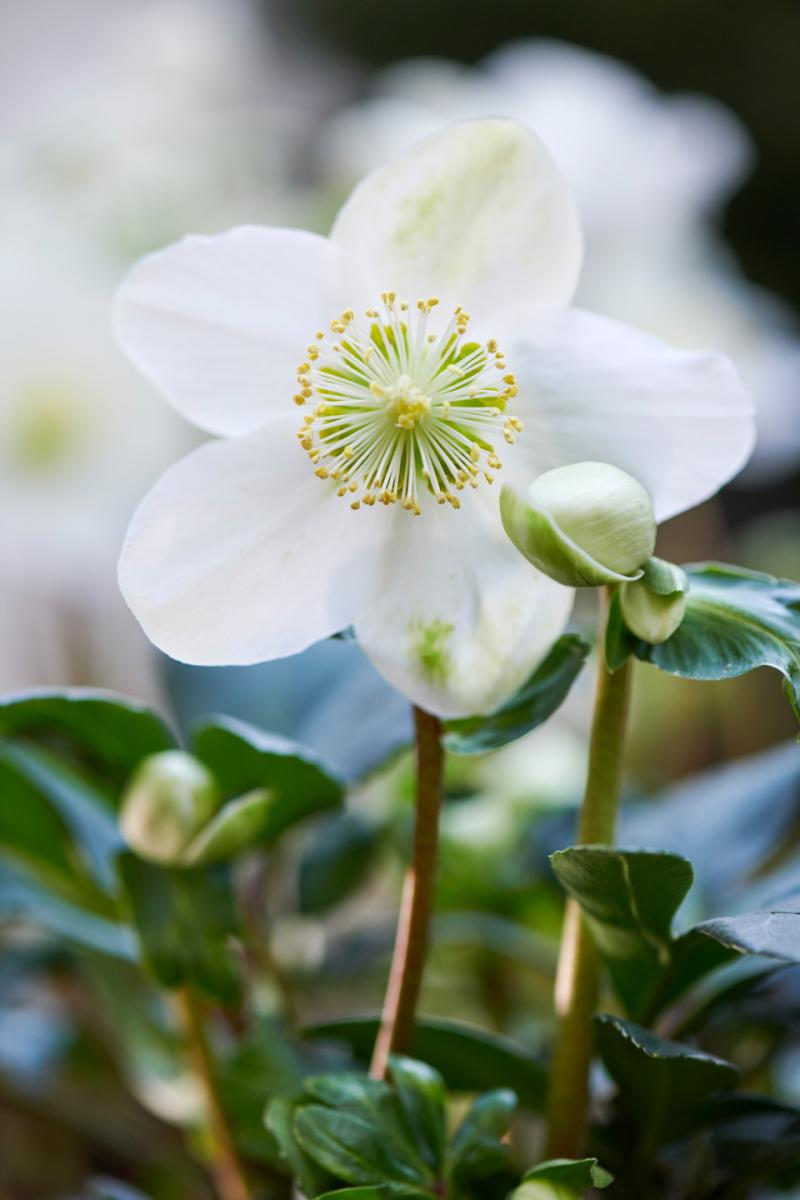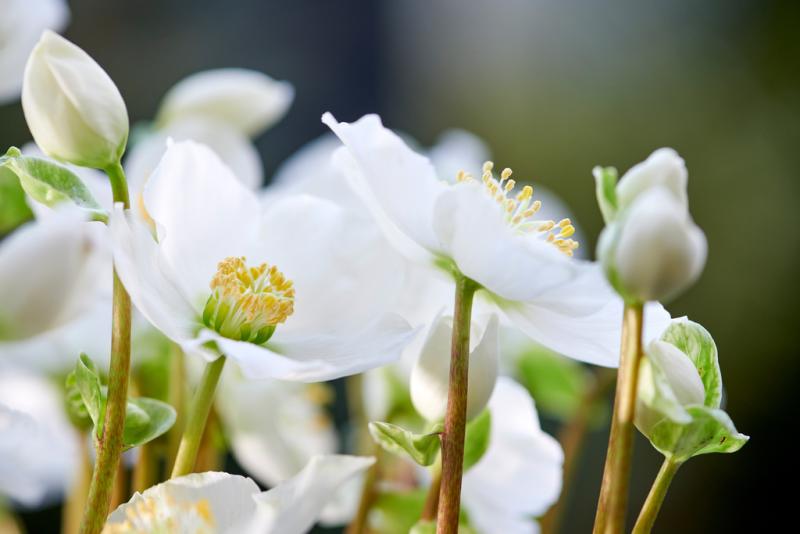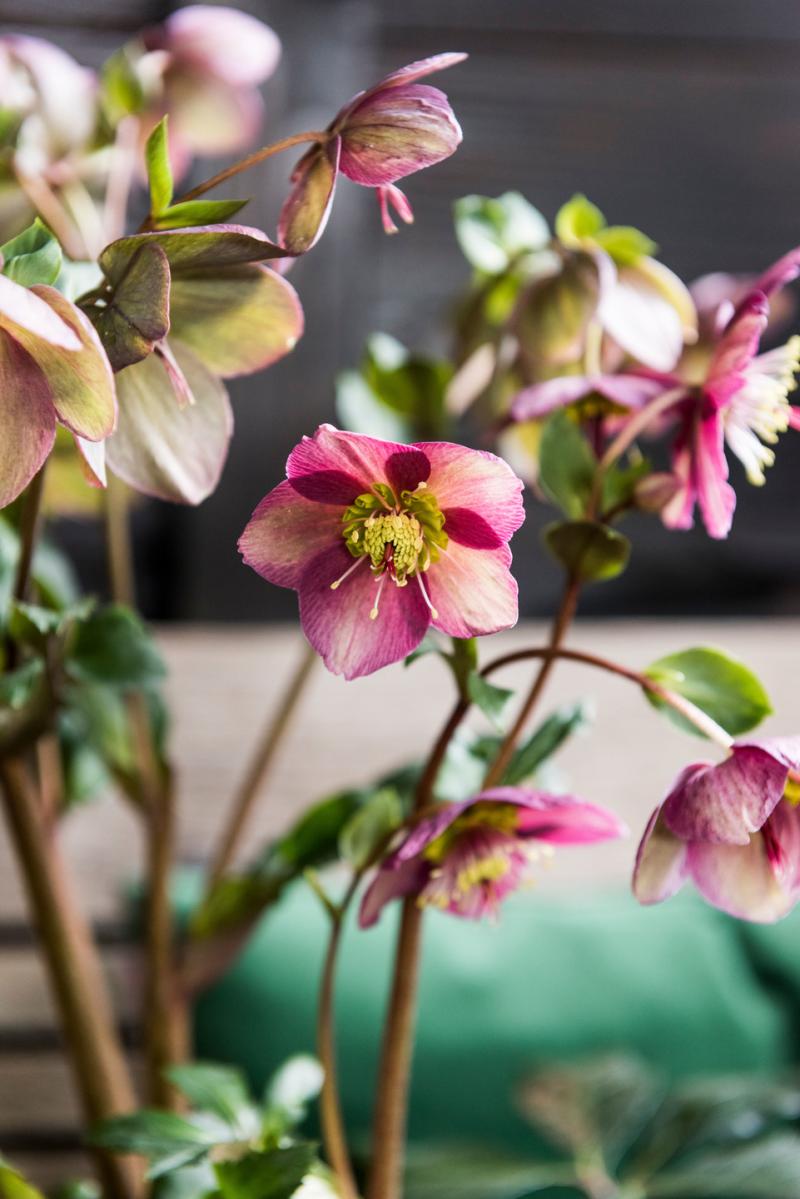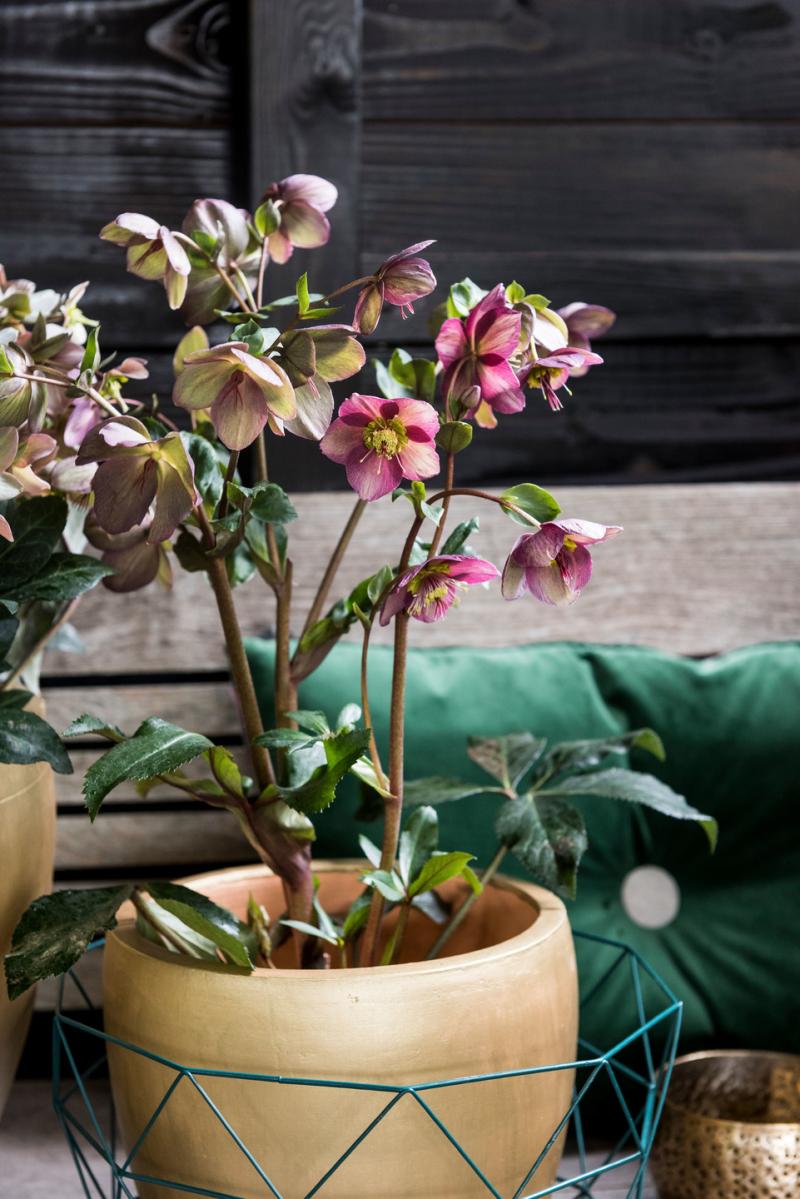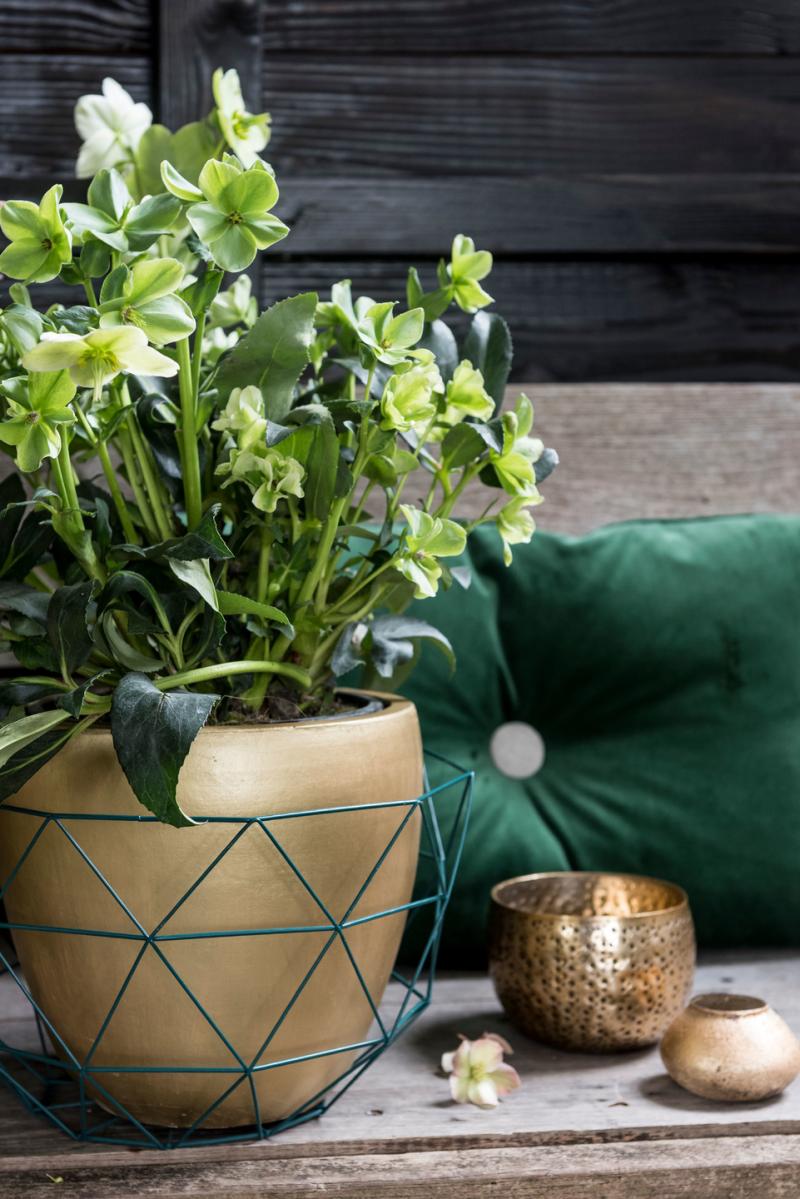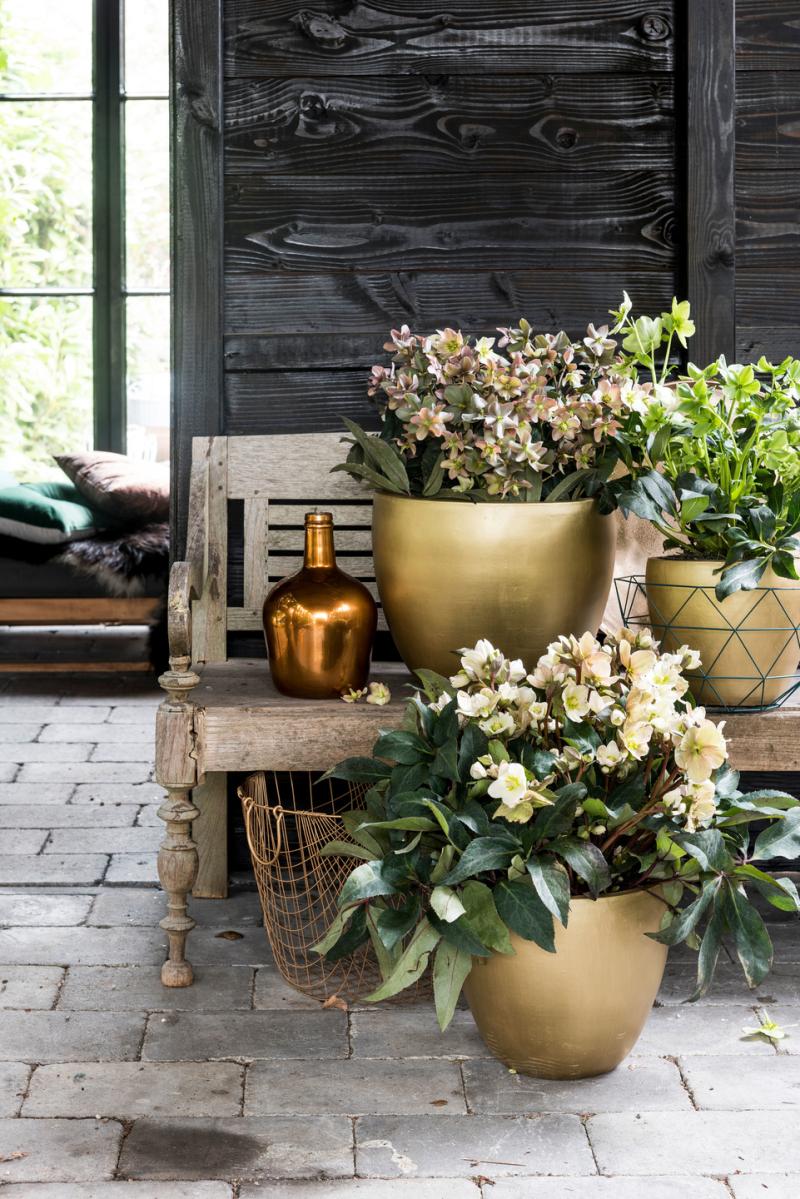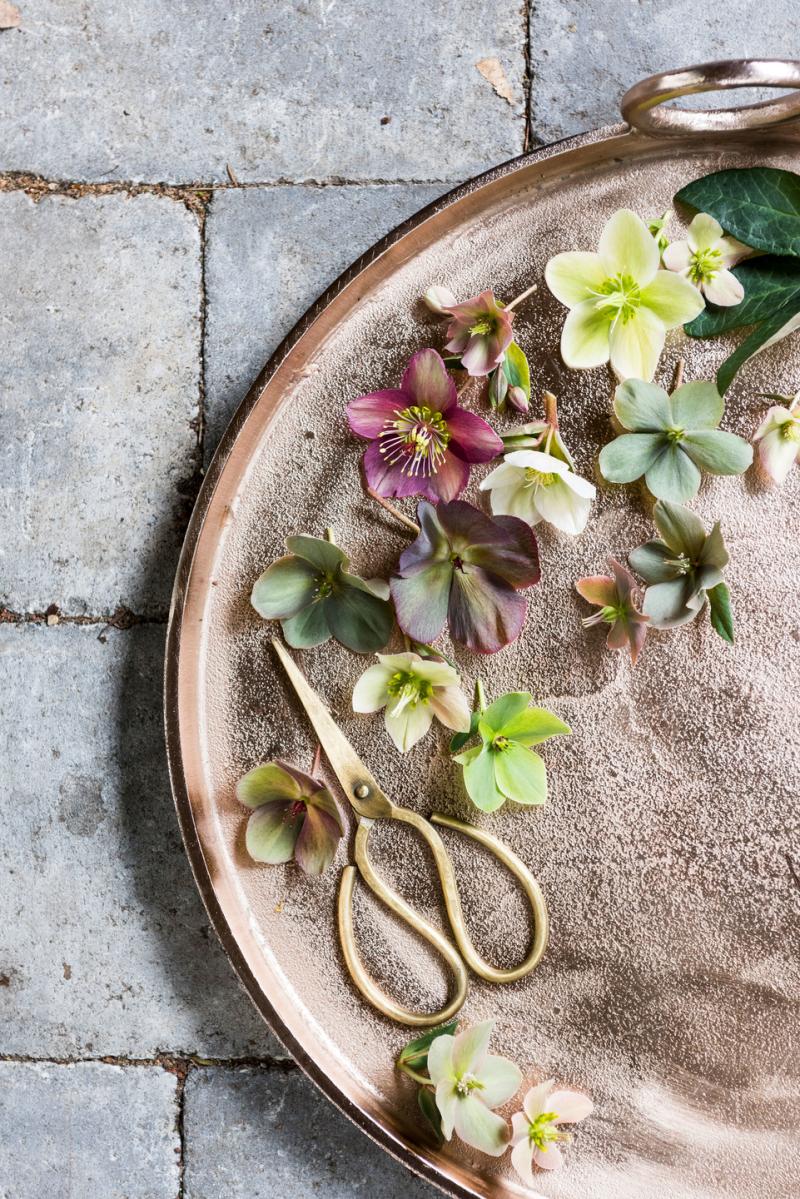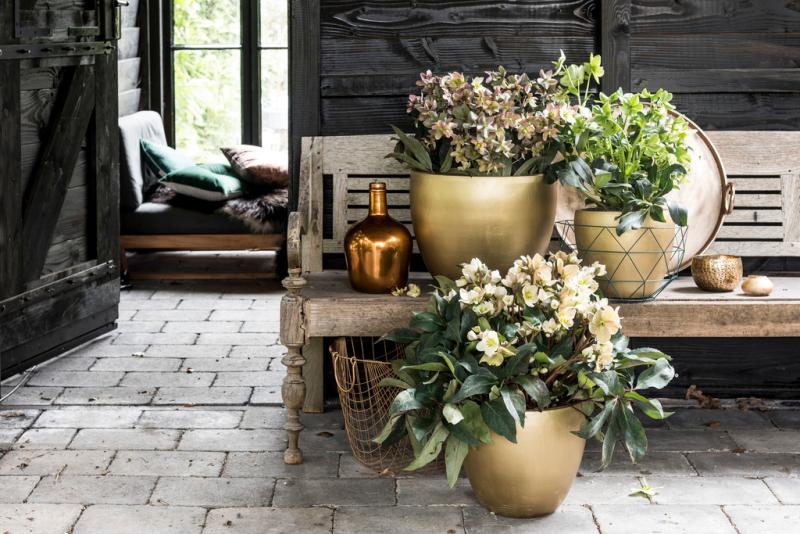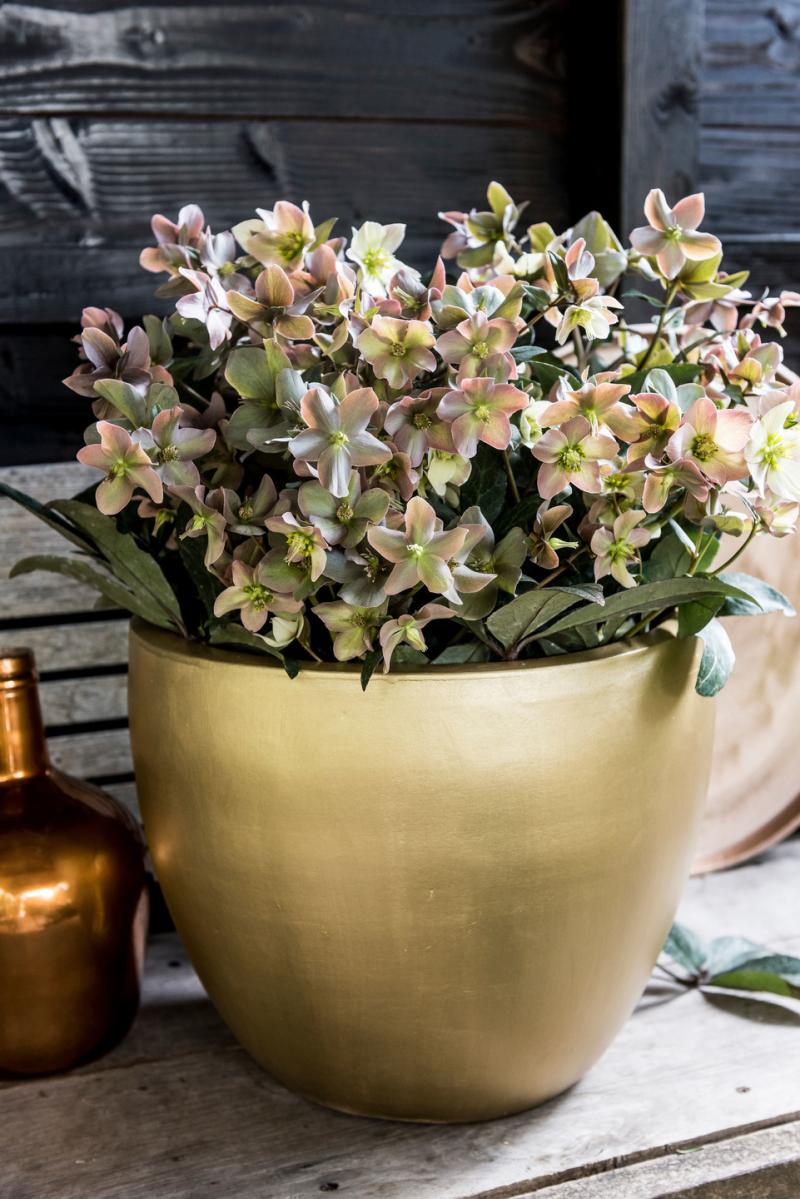Garden Plant of the Month December: Helleborus
Helleborus flowers in the middle of winter
It’s always spectacular: a plant that blooms when most garden plants are hibernating. Helleborus (also known as the Christmas rose) treats you to large white flowers with a fantastic crown of stamens at their heart from November to March. The plant can cope with snow or frost: branches might droop a bit, but as soon as the temperatures climb again, Helleborus will straighten up.
Range
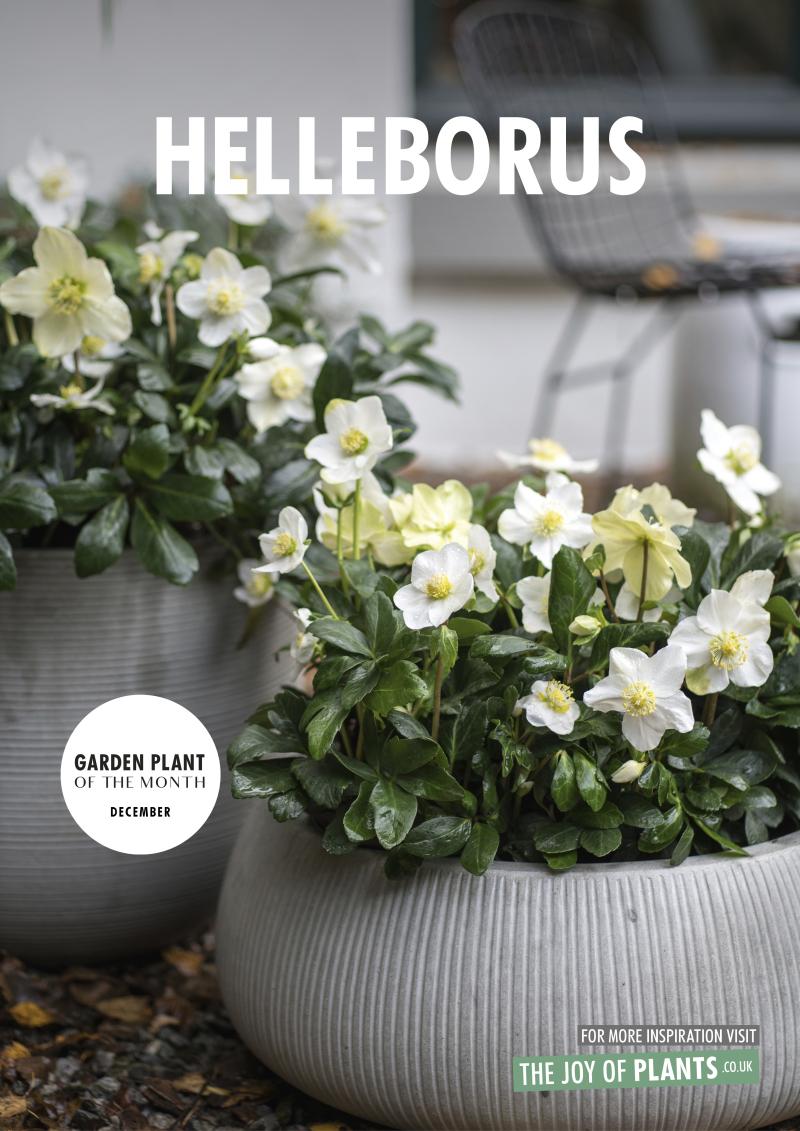
Helleborus orientalis has yellow, pink and dark purple flowers, and there are also varieties with spotted flowers. Like Helleborus niger, this Christmas rose comes in various sizes, from small enough to be used in a hanging basket through to a tall bush which needs a substantial pot or a big spot in the border.
Trivia
• The common name of Christmas rose derives from an old legend in which the plant emerged in the snow from the tears of a girl who had no gift for the baby Jesus in Bethlehem.
• In the Middle Ages Helleborus was cultivated by people to keep away evil winter spirits.
• The plant has been known for a long time. The physician Melampus referred to it in 1400 BC.
• Helleborus symbolises pioneering and survival.
Origin
Helleborus is a member of the Ranunculaceae (buttercup) family. The plant is native to the forests of south and central Europe and west Asia. The plant can be spotted in the wild in the Alps, Carpatrhian and Appenine mountains.
What to look for when buying
• Check the balance between pot size and bush, the plant must have a number of viable buds and be free of pests.
• The soil must be sufficiently damp to prevent the plant from drooping.
• Yellow leaves can indicate leaf-miner flies; botrytis manifests itself as black spots on the white petals.
Sales and display tips
As the star of December, the Helleborus likes to be placed alongside red and white patio Cyclamen, Poinsettias and Christmas accessories for an attractive display. It’s also a very popular plant for large-scale outdoor arrangements, combined with checkerberry, ornamental wood, heather, moss and - for example - small outdoor lanterns.
Care tips for customers
• Place Helleborus in a sheltered sunny spot. The more the plant is shaded, the fewer flowers of it will produce.
• The plant shows when it needs extra water with its drooping leaves. After a couple of hours of watering, the Helleborus will have perked up completely.
• Don't water when it's freezing: the plant consumes hardly anything at those times.
• Some plant food once a fortnight encourages extra-long and profuse flowering.
Downloadable POS material:

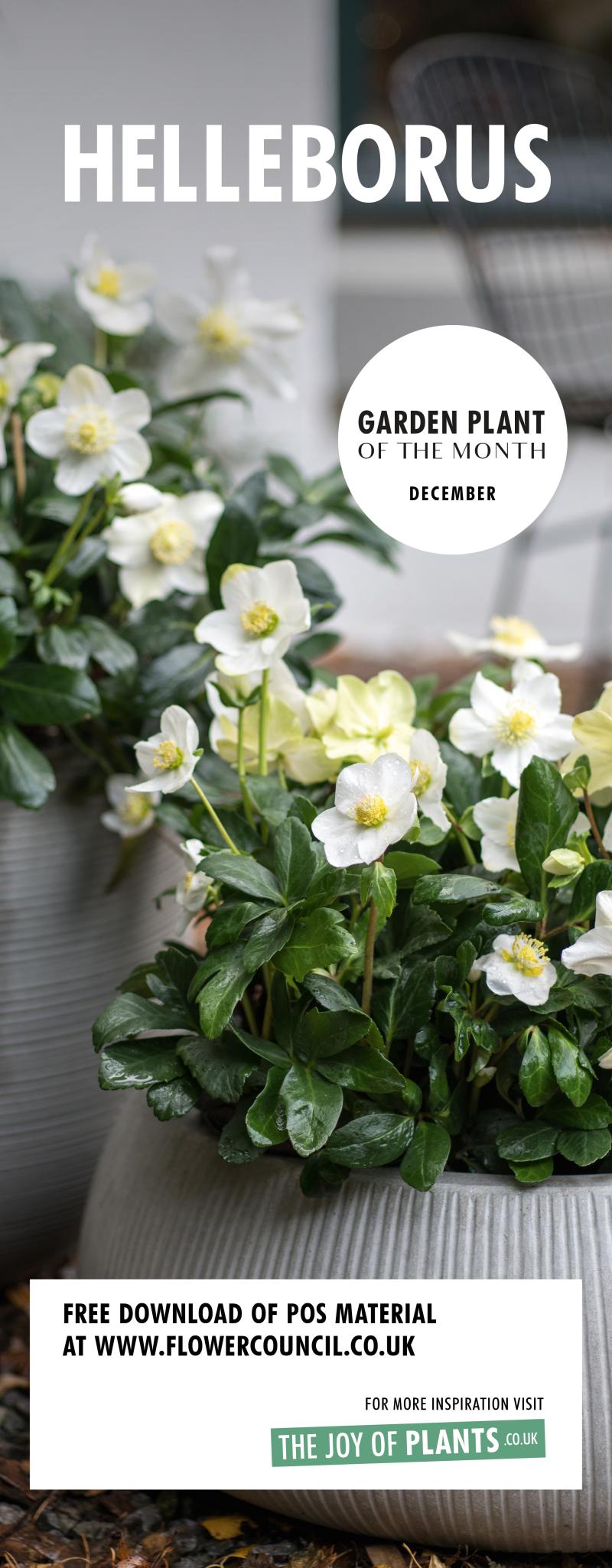
Garden Plant of the Month
Helleborus is the Garden Plant for December 2018. The ‘Garden Plant of the Month’ is an initiative from the Flower Council of Holland. Every month the Flower Council works with representatives of the floriculture sector to choose a plant with an amazing look or unusual characteristics to put in the spotlight. Sometimes it will be a green star that’s highlighted, and sometimes an undiscovered treasure that deserves to be better known and merits a place in the garden, on the patio or on the balcony. Because everyone is happier with more plants.
More information:
Facebook: thejoyofplants
Twitter: @ thejoyofplants
Thejoyofplants.co.uk
Thejoyofplants.co.uk is an initiative by the Flower Council of Holland to enable consumers to discover that you feel better with plants around you.

